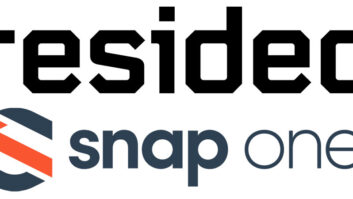Prior to my career in AV, I was a golf professional at a private club in Northern California. And as you would expect, this meant I got to spend a lot of time around golf and golfers. After finally getting around to watching this years’ Masters (if you missed my blog post last week, my wife gave birth to our new baby girl, Audrey Elize, on Sunday 4/10, the final day of the tourney) one of the things that I really noticed was the relationship between players and caddies and how it has evolved over the years and how it mimics our relationship with clients.
In the past, the role of caddy was far more of a subservient, pack mule mentality. “You tell me how far out we are, and I’ll tell you what club to get me. Fix my divot, clean my ball, carry my clubs. That’s it.” Conversations outside of these boundaries were limited or non-existent and it wasn’t uncommon for caddies to be fired on the course for some perceived sleight.
But the modern caddy has a far more vested and vital role in the relationship. Watching the interactions between Jordan Spieth and caddy Michael Greller during Sunday’s Masters made it obvious this was a tightly knit team working together. Sure, Greller carried the clubs and fixed the divots, and Spieth hit all the shots and ultimately got the lion’s share of the glory (or blame), but every shot, swing, and club selection was discussed thoroughly prior to Spieth hitting it.

Jordan Spieth and caddy Michael Greller
When you could overhear the conversations between them there was a lot of, “Do we like this?” and “How do we feel about this?” On one hole Spieth “overruled” Greller’s club selection due to a last-minute breeze that came up, and Greller immediately jumped behind his player’s call, telling him to commit to it and put a good swing on it.
This “we” relationship was no more evident than after Spieth’s gut-wrenching collapse on 12 after chunking a second ball into Rae’s Creek which led to the eventual tournament losing quadruple bogey. Afterwards he turned to Greller and said, “Buddy, it seems like we are collapsing.”
I played in a few golf events in my day and used a few different caddies, but my favorite was my best friend, Dan. While Dan didn’t know much about golf—he once brought me both my 6 and 9 iron because he wasn’t sure which was which and wanted to make sure he didn’t bring me the wrong one—he knew a lot about me. Dan would plow into any area to find an errant ball, and would lay down on the green to try and get the best read of the putt he could. He helped me shrug off the bad shots and celebrate the good ones. When I finally passed a huge milestone in my golfing career—the Playing Ability Test—with Dan on my bag, we celebrated with a bottle of Dom Perignon.
And sometimes that supportive, “I’ve got your back; we’re in this together” mental partner is exactly what is needed most.
Much of this made me think of the client relationships we have. Typically our clients have little to no idea what they need for their project, but come to us seeking our years of experience to provide the best read on their situation. We take in all the information, discuss their objectives, survey the big picture, and then offer our best suggestion for an outcome that most aligns with their needs, wants, and budget. But ultimately that’s all we can do; offer suggestions. At the end of the day, it’s the player/homeowner that writes the checks, calls all of the shots, and pulls the trigger.
And if they make a “bad” one, are we there to help them through it?
I’ve been going through a bit of an addition to my home to accommodate new baby, and even though this is a tiny, one-room project, it can still be a bit overwhelming. At one point I went out in the room and stood in the middle just looking around for about 15 minutes trying to decide where I was going to position a pair of speakers.
While we might show up on a jobsite thinking our questions—Where do you want the touchscreen? Should the speakers go here? How high do you want the TV? How is this cabinetry going to lay out?—are the most important ones, they are really just a small drop in a whirlwind of decisions the homeowner is forced to make on a near daily basis.
Taking a proactive and leading approach like “I think we should do this…” or “This is how I’d do it at my house…” or “We’ll get the best results by…” can help ensure that both the project and long-term relationship finishes in the money.






